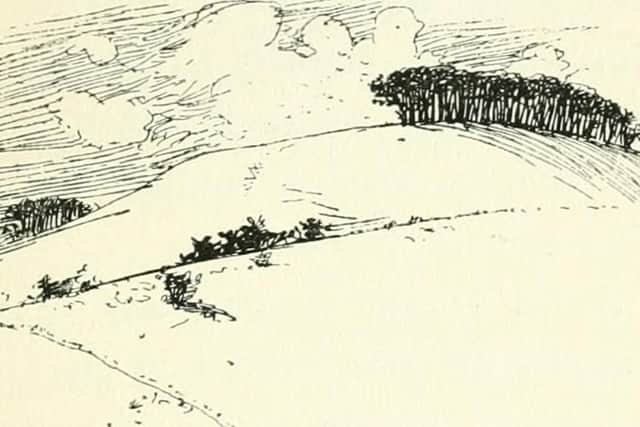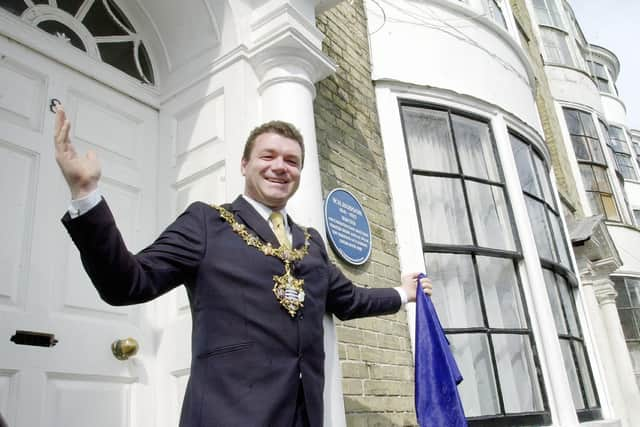The legacy of naturalist William Henry Hudson, 100 years after his death
and live on Freeview channel 276
Richard Jefferies is the better known but William Henry Hudson is also an important figure and one who wrote more extensively about Sussex.
This week marks the 100th anniversary of Hudson’s death, an ideal opportunity to recover him from the enigma with which he surrounded himself.
Advertisement
Hide AdAdvertisement
Hide AdIn his lifetime, he was admired by the likes of Virginia Woolf and Joseph Conrad, who declared of him that he wrote ‘as the good God makes the grass grow’. But Hudson did his best to write himself out of history.


Also in the news: See what is on the Angmering Village Trail and you could win a meal for two at The Stone Room in Angmering
See also: New exhibition pays tribute to late Southwick historian and draws on his extensive archives
"I would far rather be forgotten the instant I quit the scene,” he stated. True to his word, he had much of his correspondence burned on his death.


Advertisement
Hide AdAdvertisement
Hide AdHis was a fascinating life, one in which he attained fame only after many years of impoverishment and anonymity.
Hudson declared in the title of his autobiography he had been born Far Away and Long Ago. The date was August 4, 1841, the location a sparsely settled farming community south of the Argentinian capital Buenos Aires. His childhood home was a sheep ranch settled by his American parents, who had moved to South America some years earlier.
He received little formal education, teaching himself from books and wandering alone across the pampas, where he cultivated an almost mystical love of the natural world.
Life on the plains was challenging. Hudson contracted rheumatic fever as a teenager, leaving him with a weakened heart. He also lost both of his parents at a relatively early age.
Advertisement
Hide AdAdvertisement
Hide AdHudson served in the army before spending some time in Patagonia. He also pursued his interest in natural history by collecting bird skins for the Smithsonian in Washington DC. In April 1874, he embarked for England.
London proved unwelcoming. Poverty led Hudson to sleep in Hyde Park before moving into a boarding house owned by his future wife, Emily Wingrave.
The Hudsons struggled. Emily went bankrupt but was saved by the inheritance of another lodging house. A former soprano, she taught music lessons to make ends meet.
William also started to write. He penned natural history books drawing on his earlier life in South America, including The Naturalist in La Plata (1982), as well as novels such as the romance Green Mansions (1904).
Advertisement
Hide AdAdvertisement
Hide AdOnly in his later years, though, did he gain his enduring reputation. In 1889, he helped found the Royal Society for the Protection of Birds, becoming its chairperson. Friends also secured him a civil service pension in 1901 that gave him a stable income.
His books also started to sell. Hudson focused his later writing on the natural history of his adopted homeland, including Sussex. This included Nature in Downland (1900), one of the best works written about the county’s rural life.
Hudson knew Sussex well. He holidayed in Shoreham, where he loved watching the birdlife at the Adur Estuary but was less enamoured with the beachfront housing development known as Bungalow Town.
His walk across the county during the long hot summer of 1899 was the basis of Nature in Downland. Hudson wrote poetically but precisely about not only the flora and fauna of Sussex but also the farming community and their folkways.
Advertisement
Hide AdAdvertisement
Hide AdThe naturalist was much taken with villages such as Alfriston and Ditchling. He cared less for larger towns. Brighton he tolerated but Chichester, he claimed, smelled and was full of ‘the most drink-degraded creatures it is possible to find anywhere in the kingdom’. What redeemed it was the cathedral, which gave the surrounding landscape ‘a unity and distinction which it would never have possessed if by chance men had not built that spire precisely where it stands’.
Hudson could also be rude about the rural people of Sussex. He claimed many possessed ‘a streak or vein of stupidity’, including one rustic fellow who he asked for directions to the nearest hostelry. The man pointed the way but when asked the name of the inn, claimed it did not have one. Surely it must, Hudson pressed him. “We call it The Oak,” the countryman replied, “but if it has a name I never heard it.”
Despite their supposed fondness for the bottle, Hudson generally admired Sussex folk. They were ‘good-looking people, and good to live with’, he wrote. Hudson admired their dedication to hard work and ‘sturdy independence of spirit’ captured in the county motto ‘We wunt be druv’.
Above all, Hudson loved the abundance and diversity of wildlife on the South Downs. But he was also a prophet in warning of the decline of birds in particular. Bustard and chough were among the many species lost from the landscape because of egg collecting and shooting. Spotting a solitary stone curlew, he wrote of its call ‘perhaps that wild yet human-like whistle it uttered in my hearing was its last farewell’.
Advertisement
Hide AdAdvertisement
Hide AdWhen Emily Hudson fell ill, she moved to Worthing for the sea air. Hudson visited her many times but his own declining health prevented his becoming a resident.
That Hudson never lived in Worthing has led to claims he did not care for the town. Yet he lauded the mildness of its climate and the fertility of the soil. Worthing, he asserted, was ‘the chief vineyard and garden of rare fruits in England’.
Hudson died on August 18, 1922, and was buried at Broadwater Cemetery, where Emily had been laid to rest a year earlier. Now, 100 years after his death, the naturalist has left us an important legacy.
Intensive agriculture, urban development and environmental change have decimated the habitats of many animals and birds, endangering many species. This centennial year is a time to heed Hudson’s warning from the past about the need to protect our future.
